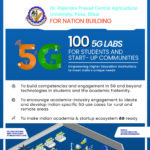In a significant endeavor to inspire and cultivate environmental awareness and leadership among India’s youth, the National Environment Youth Parliament-2024 (NEYP-2024) has been launched. This visionary initiative is led by Students for Development (SFD) and Paryavarn Sanrakshan Gatividhi, in partnership with the Ministry of Environment, Forest, and Climate Change (MoEF&CC), the Government of India, and various stakeholders. It holds the promise of charting the course for the future of environmental conservation in the country.
NEYP-2024 serves as a dynamic platform that unites young individuals in purposeful dialogue, action, and initiatives aimed at addressing the pressing environmental challenges facing our nation. Through an array of activities such as seminars, workshops, panel discussions, interactive sessions, and policy debates, this initiative seeks to nurture comprehensive solutions. It actively engages students and young individuals from diverse backgrounds, benefiting both the environment and nurturing the next generation of environmental leaders in India.
The primary objectives of NEYP-2024 encompass:
- Green Leadership: Empowering young individuals with leadership skills and a profound sense of responsibility towards environmental stewardship.
- Youth Engagement: Encouraging active participation and fostering a deeper understanding and appreciation for the intricacies of nature.
- Decision-Making: Equipping participants with tools to make informed decisions on environmental matters.
- Diplomacy: Fostering diplomacy and collaborative problem-solving, promoting effective communication and teamwork.
Recognizing the significance of this initiative, we invite institutions and educational leaders to encourage their students to participate in the National Environment Youth Parliament 2024, contributing to the success of this transformative program. Join us in shaping a greener and more sustainable future for India.
Official Letter from UGC : https://www.ugc.gov.in/pdfnews/7464269_PARTICIPATION-IN-NEYP-2024.pdf


